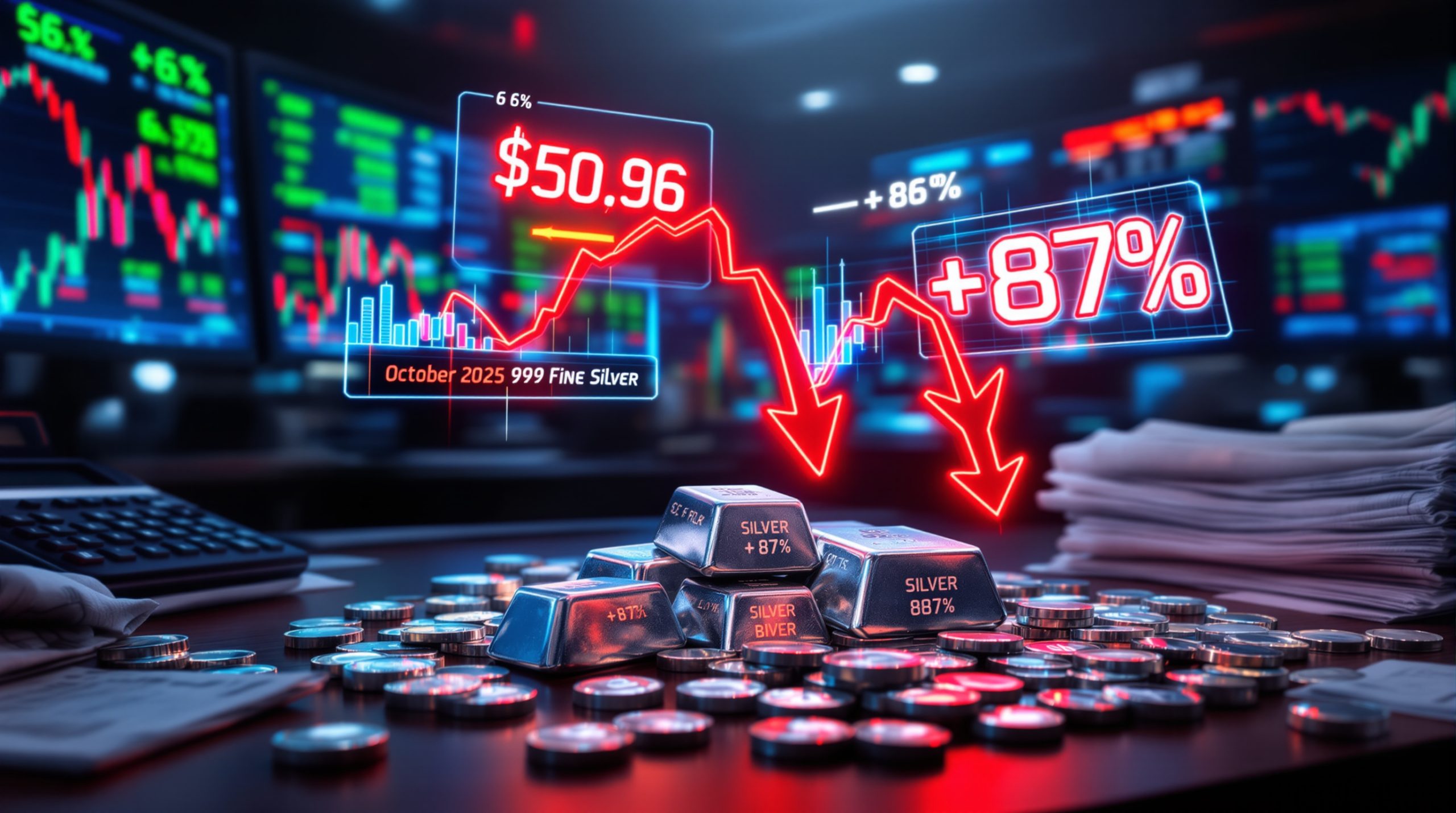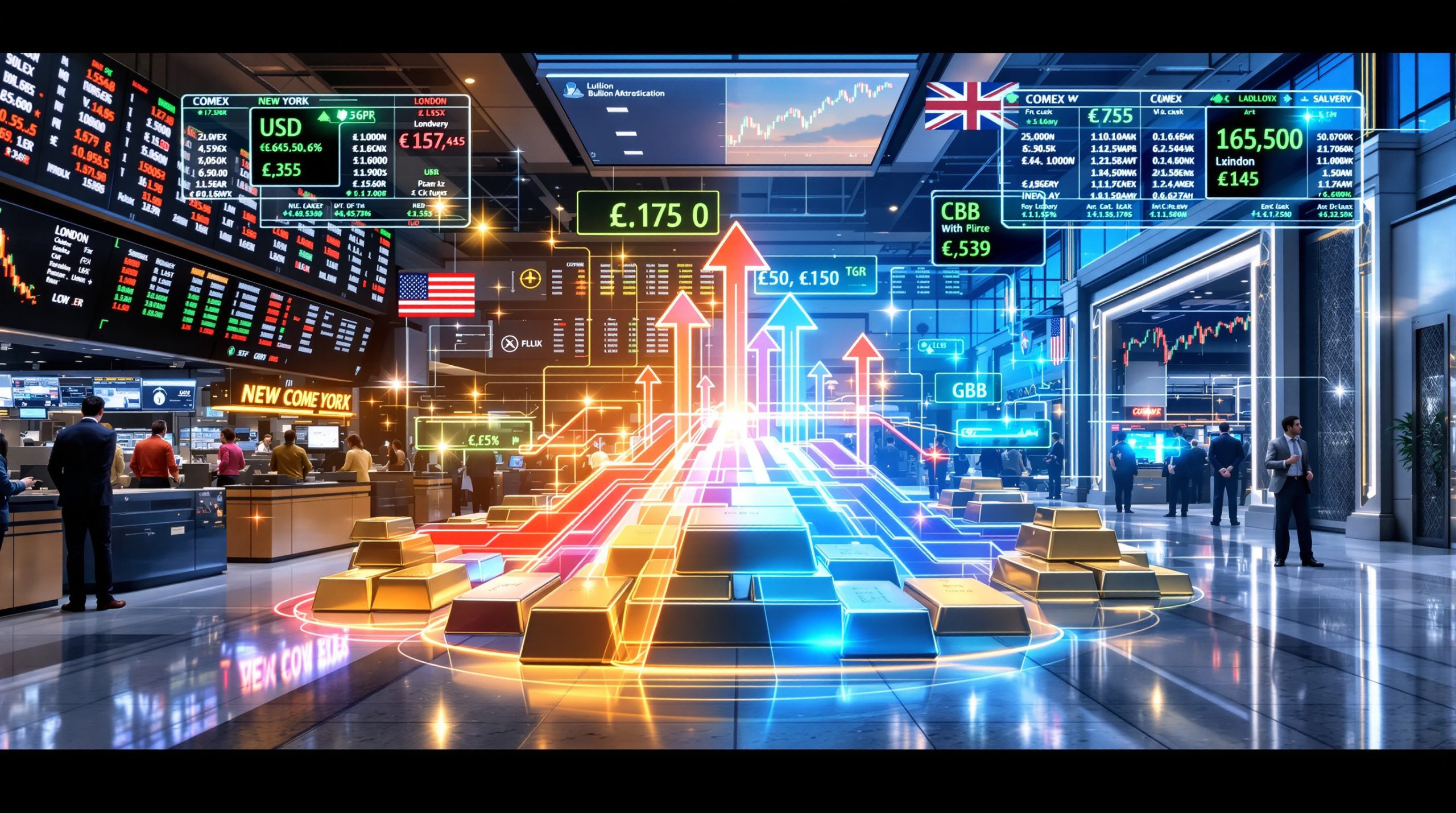The Transforming Physical Gold Market: How Demand Centers Are Shifting in 2025
The physical gold market is undergoing significant transformation in 2025, with notable shifts in trading patterns, demand centers, and market dynamics. These changes represent more than typical market cycles, reflecting deeper structural changes in how gold is valued, traded, and accumulated globally.
Key market indicators showing transformation
- Gold prices establishing new thresholds above $2,700/oz (up from previous trading ranges)
- Physical demand consistently outpacing available supply in key trading hubs
- Central bank purchasing continuing at historically significant levels
- Eastern markets gaining unprecedented influence in price discovery mechanisms
- Retail investor participation reaching record levels across diverse demographics
The convergence of driving factors
The current gold market transformation stems from multiple concurrent factors rather than a single catalyst. Geopolitical tensions, monetary policy adjustments, persistent inflation concerns, and technological innovations are simultaneously reshaping gold's function in the global financial system.
Why are gold prices reaching record levels in 2025?
Gold has established new price thresholds in 2025, with values consistently trading in ranges that would have seemed extraordinary just a few years ago. This price revolution reflects fundamental changes in market perception and valuation mechanisms. Recent record gold highs analysis shows this trend is likely to continue.
The new price paradigm explained
- Price floor establishment around $2,650-2,700/oz compared to previous $1,800-2,000 range
- Consistent trading in higher bands with reduced volatility during consolidation periods
- Technical resistance levels being systematically broken after multi-month consolidations
- Reduced price sensitivity to traditional market correlations
- Analysts suggesting potential continued strength based on fundamental drivers
Breaking traditional market correlations
Historically, gold prices maintained relatively predictable correlations with factors like US dollar strength, real interest rates, and equity market performance. In 2025, these relationships have weakened significantly, with gold showing strength even during periods when traditional models would predict weakness.
How are central banks transforming the gold market?
Central banks have emerged as dominant forces in the physical gold market, fundamentally altering supply-demand dynamics through consistent and substantial acquisitions over an extended period.
The acceleration of official sector purchases
- Fifteen consecutive years of net buying by central banks (confirmed by World Gold Council data)
- Annual acquisition rates exceeding 1,000 tonnes (1,037 tonnes in 2023 alone)
- Diversification away from dollar-denominated assets accelerating
- Emerging market central banks leading purchasing activity
- Strategic rather than tactical acquisition patterns becoming evident
Strategic motivations behind central bank accumulation
Central bank gold acquisition strategies reflect more than portfolio diversification. According to IMF data, global central bank gold reserves total approximately 36,700 tonnes, with consistent growth trends. These purchases represent strategic positioning amid changing global monetary landscapes, de-dollarization initiatives, and preparation for potential monetary system reforms. Many investors are turning to gold as inflation hedge during these uncertain times.
What role is China playing in reshaping the gold market?
China has emerged as the epicenter of the physical gold market transformation, wielding influence through multiple channels including consumption, production, and market infrastructure development.
China's multifaceted gold market influence
- Record-breaking domestic consumption through both retail and institutional channels
- Strategic national reserves accumulation through various channels
- Development of the Shanghai Gold Exchange as an increasingly influential price discovery mechanism
- Integration of gold into broader financial initiatives
- Domestic production combined with international acquisition strategies
The Shanghai Gold Exchange's growing importance
The Shanghai Gold Exchange has evolved from a domestic trading platform to an increasingly influential global price discovery mechanism, challenging the traditional dominance of London and New York markets through physical delivery requirements and expanding international participation. Price formation is increasingly occurring in physical markets in Dubai, Shanghai, and Mumbai rather than exclusively in COMEX and LBMA.
How is physical gold demand changing among retail investors?
Retail investor participation in physical gold markets has undergone a remarkable transformation, with new demographics entering the market and established participants changing their acquisition patterns.
The democratization of gold ownership
- New investor demographics entering the physical gold market across various age groups
- First-time buyers converting significant portions of savings to gold as inflation protection
- Technology enabling fractional ownership and easier access for smaller investors
- Growing preference for allocated storage over unallocated options
- Increased demand for smaller denomination products (1oz coins, fractional bars)
Changing storage and custody preferences
Modern gold investors are demonstrating evolving preferences regarding custody arrangements, with growing emphasis on:
- Geographical diversification of storage locations beyond traditional centers
- Direct ownership verification capabilities through advanced audit systems
- Reduced reliance on traditional banking system storage
- Preference for jurisdictions with strong property rights and asset protection
- Integration of technology for transparent auditing and verification
How are gold trading hubs and price discovery mechanisms evolving?
The traditional centers of gold price discovery are experiencing significant challenges to their dominance, with physical markets gaining influence over paper markets in determining prices.
The shifting balance of power in price discovery
- Physical premiums in Eastern markets increasingly influencing global pricing
- Reduced correlation between COMEX futures and physical market prices in key hubs
- Growing importance of Dubai, Shanghai, and Mumbai as trading centers
- Declining relative influence of London OTC and COMEX futures markets
- Premium differentials between Eastern and Western physical markets becoming more pronounced
The rise of alternative trading venues
New gold trading venues are emerging to address market inefficiencies and meet evolving investor preferences:
- Regional exchanges gaining global significance beyond their geographic boundaries
- Blockchain-based trading and settlement platforms improving efficiency and reducing costs
- Direct dealer networks bypassing traditional exchanges for institutional clients
- Peer-to-peer trading platforms connecting buyers and sellers without intermediaries
- Specialized platforms for institutional physical gold trading with enhanced liquidity
What impact is technology having on physical gold markets?
Technological innovation is transforming how physical gold is traded, stored, tracked, and verified, addressing historical inefficiencies in the market.
Blockchain applications in gold markets
- Tokenization of physical gold enabling fractional ownership for smaller investors
- Immutable custody chain verification systems reducing counterfeiting concerns
- Smart contracts automating trading and settlement processes with greater efficiency
- Reduced counterparty risk through technology-enabled transparency
- Integration with broader digital asset ecosystems creating new use cases
Modernization of physical gold infrastructure
Beyond blockchain, broader technological innovations are reshaping physical gold markets through:
- Advanced authentication technologies reducing counterfeit risks
- Real-time auditing capabilities for storage facilities increasing transparency
- Improved logistics and security systems enhancing operational efficiency
- Data analytics enhancing market transparency and price discovery
- Mobile applications democratizing market access for retail investors
How are gold investment vehicles evolving to meet changing demand?
Investment vehicles providing exposure to physical gold are adapting to meet evolving investor preferences and market conditions.
Evolution of gold ETFs and trusts
- Strong inflows into physically-backed ETFs during periods of market uncertainty
- Growing preference for funds with allocated rather than unallocated backing
- Geographical diversification of storage locations to reduce jurisdictional risk
- Enhanced transparency regarding custody arrangements
- Specialized products targeting specific investor concerns and preferences
Innovation in physical gold investment products
Beyond traditional investment vehicles, new products are emerging to address specific market needs:
- Yield-generating physical gold products through lending and leasing programs
- ESG-focused responsible gold investment options with verified sourcing
- Physically-backed digital gold currencies with enhanced liquidity features
- Direct ownership programs with simplified logistics for retail investors
- Hybrid investment products combining physical backing with other assets
As seen in the emerging markets, smaller nations are beginning to use ETFs as testing grounds for precious metals exposure. Saudi Arabia has made initial forays into silver investment through ETF vehicles, albeit with relatively modest positions ($30-35 million) that likely represent exploratory allocations rather than major strategic shifts. For investors looking for guidance, various gold investment strategies have emerged in response to these market shifts.
What does the future hold for the physical gold market?
The transformation of physical gold markets represents a structural shift rather than a cyclical change, with significant implications for the future of the precious metal in the global financial system. Understanding the latest gold market surge insights can help investors navigate this changing landscape.
Long-term structural market changes
- Permanent shift in price discovery influence from West to East
- Integration of gold into evolving digital financial ecosystems
- Reduced influence of paper markets on physical pricing
- Growing importance of direct ownership versus synthetic exposure
- Potential formalization of gold's role in monetary systems
Preparing for the next phase of market evolution
Market participants can position themselves for the continuing transformation by:
- Focusing on physical allocation rather than paper exposure
- Diversifying storage jurisdictions and custody arrangements
- Embracing technological innovations enhancing transparency
- Monitoring central bank activity as a leading indicator
- Recognizing the diminishing relevance of traditional market correlations
Market analysts from firms like JPMorgan's commodities research team suggest these fundamental drivers will remain in place "for the foreseeable future, at least for the next couple of months, probably the next one to three years, maybe even for the next decade," reflecting the structural nature of these changes.
FAQ: Understanding the Physical Gold Market Transformation
Why is physical gold outperforming financial assets in 2025?
Physical gold's outperformance stems from a fundamental reassessment of risk in the global financial system. With persistent inflation concerns, geopolitical tensions, and monetary policy uncertainty, investors are prioritizing tangible assets with no counterparty risk. The physical nature of gold provides protection against both financial system vulnerabilities and currency debasement concerns.
How are silver markets being affected by gold's transformation?
Silver markets are experiencing parallel transformations, though with distinctive characteristics. While gold's movement is primarily driven by investment and central bank demand, silver's dual role as both precious and industrial metal creates a more complex demand profile. With silver trading around $31-32 per ounce, the gold-silver ratio remains elevated at approximately 87-88, suggesting potential relative value in silver compared to gold according to many analysts.
What role are family offices and high-net-worth individuals playing?
Family offices and high-net-worth individuals are emerging as significant forces in physical gold markets, often bypassing traditional investment vehicles in favor of direct ownership arrangements. These sophisticated investors are establishing private vaulting solutions, diversifying storage across multiple jurisdictions, and developing direct relationships with refiners and major dealers to secure reliable supply chains.
How are mining companies responding to the market transformation?
Gold mining companies are adapting their strategies to capitalize on higher price environments while addressing emerging market preferences. Key responses include:
- Accelerating development of advanced-stage projects to meet increased demand
- Emphasizing responsible mining practices to meet ESG demands
- Exploring vertical integration opportunities to capture more value
- Developing direct relationships with end consumers
- Implementing technological innovations to improve operational efficiency
What impact might central bank digital currencies have on gold demand?
The development and implementation of central bank digital currencies (CBDCs) may further stimulate physical gold demand as investors seek protection from potential monetary surveillance and control mechanisms. Gold's privacy attributes, portability, and independence from digital infrastructure make it a complementary asset in a CBDC-dominated financial landscape. Current gold price forecast trends suggest this demand will only intensify.
Market observers note that despite reaching multi-year highs, precious metals markets don't yet show signs of the euphoria typically associated with market tops. As one analyst noted during a recent conference, "none of the taxi drivers wanted to talk with me about gold," suggesting that mainstream adoption remains in early stages despite the price appreciation.
Disclaimer: This article contains market analysis and forward-looking statements about precious metals markets. These views represent opinions based on current market conditions and should not be construed as investment advice. All investments carry risk, and past performance is not indicative of future results. Readers should conduct their own research and consult with financial professionals before making investment decisions.
Want to Discover the Next Major Mining Opportunity?
Stay ahead of the market with Discovery Alert's proprietary Discovery IQ model, which delivers real-time notifications on significant ASX mineral discoveries, including gold and precious metals. Explore how major discoveries have generated substantial returns by visiting our dedicated discoveries page and start your 30-day free trial today.




